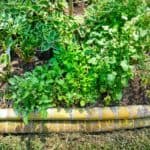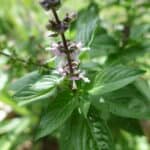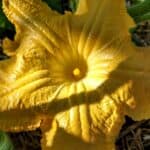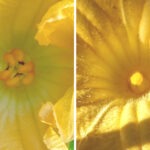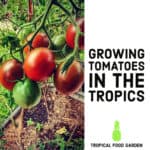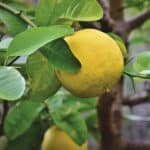This post may contain affiliate links.
What’s growing, fruiting, flowering, germinating, and cropping in our tropical food garden in August. Remember, we’re in the southern hemisphere, just 16 degrees south of the Equator, you may have to flip the seasons if you’re in the tropics in the northern hemisphere. August is the last month of winter for us and we’re into the dry season. We’ve had a good amount of light rain through to the start of August but we can feel it’s getting warmer during the day now and there’s been no rain for a few days. Nights are still cool here.
Most plants in our tropical food garden will grow as perennials. By keeping this month by month record I’m trying to learn and become a better gardener.
Jackfruit
Still not ripe, new fruit still forming. One fell victim to the chickens and when we found it looking sad and brown it was golden yellow inside and the small was amazing. I don’t think we’re very good at knowing when to pick them.
Lemons
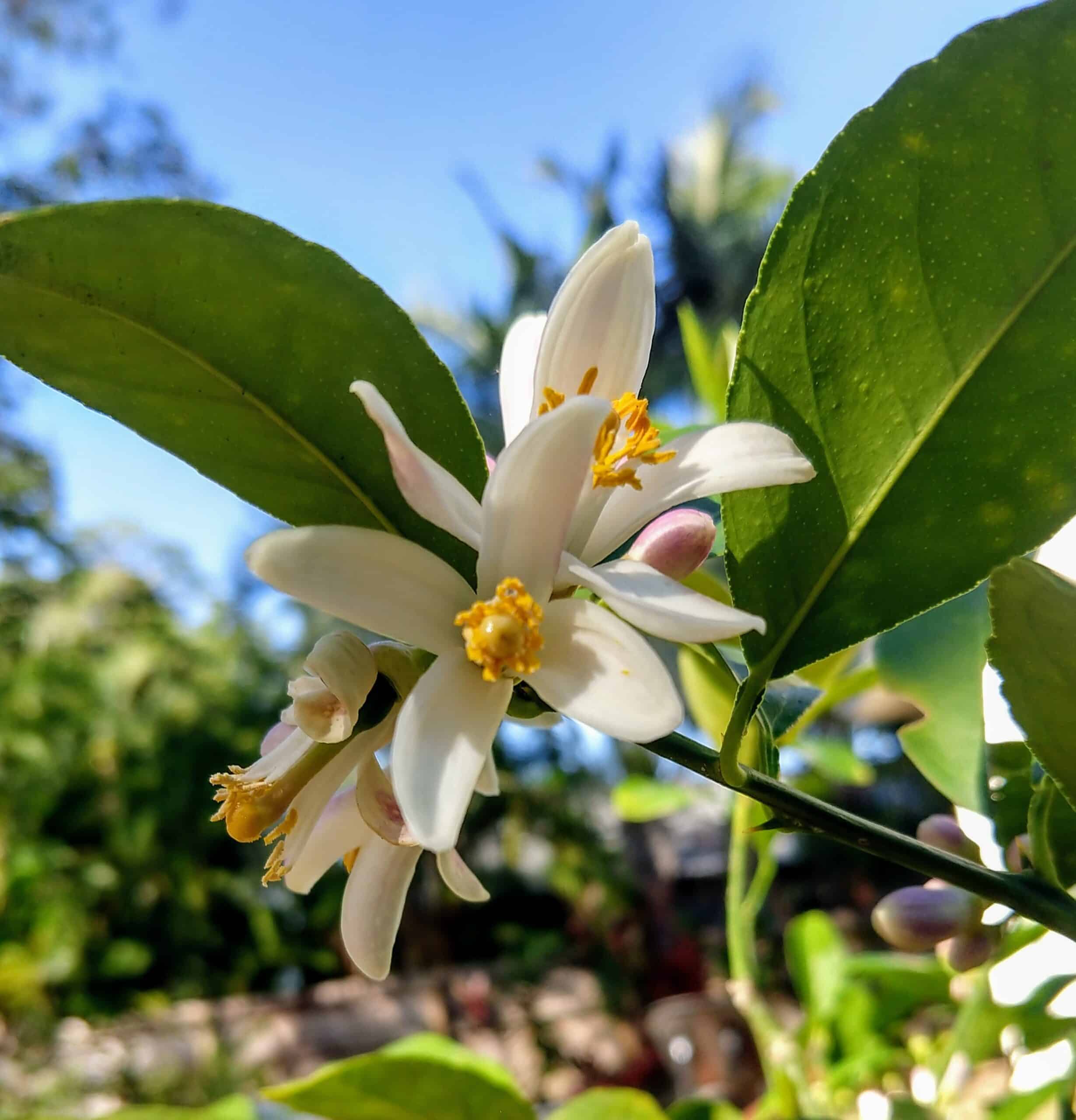
The lemon tree flowered in late August. It was flowering on the day my mother died.
Grapefruit
We juiced the last of the grapefruit in August. We picked them a few weeks previously. The longer you leave them the more super-sweet they become. Our grapefruit tree is currently having a rest, we’ll see flowers again soon.
Papayas
We have papayas on the plant, still not ripening
Strawberries
1st of August – First Flowers (these died that year, we haven’t tried again since.)
Peppers and Chillies
Something is eating our yellow peppers just as they start to fully form and ripen. Birds? Mice? Rats? But every pepper has vanished, clean-cut at the stem, overnight. We eventually figured out it was rats and they started eating low hanging tomatoes, eggplant and even kale. We got ourselves some rat traps and things improved.
Thai bird’s eye chili seedlings are growing. These were grown from seed from the original huge plant which died recently due to unknown causes. These are perennials here, fruiting all year round. The only problem with these is the birds like to eat the tiny red fruit. There are so many that it hardly matters, but a flock of birds will strip a plant in minutes.
The chili plants we bought and planted out in the wet (December) that never grew ( most died) are growing well now, they come on better as the days get warmer.
Bush Beans
We plant more every week or so, but the original plants from which we harvested in July are producing more flowers. According to the seed packet these bush beans crop within 9 weeks of planting, which seems accurate. Planting these later works better in our experience. Seeds planted in September caught up with August plantings, so we’ll probably wait until official spring in future.
Snake Beans
So many snake beans! We’ll keep planting more and turn more of the garden over to bean production because beans go with everything!
Flowering, producing more beans, harvesting beans. The Snake beans are doing well. The association between green ants and snake beans is interesting. Tip : Chickens like green ant nests.
We’ve also planted snake bean seeds in August and September, they grew, but the September (the first month of spring) plantings grew faster and caught up.
Aubergines
Flowering, flowering, struggling to form fruit. I’ve tried hand pollinating with a paintbrush, still few fruit.
Eggplant flowers, in theory, can self-pollinate and all that’s required is a bit of wind or air movement. I don’t think my aubergines have read the memo.
Apparently, it’s best to try and hand pollinate early in the morning in cooler temperatures. We continue to try and there were a few fruit in August, but September saw the start of the glut.
In September the aubergines, and we have 5 varieties, all went crazy, huge growth, pollinating easily and masses of fruit. Another vegetable that prefers a bit of warmth, it seems.
Pumpkins
The pumpkin plants are flowering but still no fruit. We have tried hand pollinating but no joy. Pumpkins tend to have separate male and female flowers, every time I go to try and pollinate there isn’t a male and a female open. Must try harder. These were grown from seed from a commercially bought pumpkin we ate. Maybe it won’t work.
Thai Basil
Going strong, still flowering, self-seeding and attracting bees. We’re making sure there is plenty of Thai basil around the garden to keep those bees coming. This grows really easily from cuttings struck in water.
Garlic Chives
These flat-leaved chives seem pretty indestructible. We failed to grow regular chives here years ago so we switched to garlic or flat-leaved chives. We planted these as seedlings in December. The plants are grown and we use handfuls of the leaves regularly. They go all year round and have never flowered or gone to seed.
We’ve started dividing the main clumps to use these as an edging plant, as suggested by various permaculture sources.
Cherry Tomatoes
Flowering and forming fruit. Not so many, but doing OK. We picked a few at the end of August, along with growing new plants from seed and cuttings.
Heritage/ Larger Tomatoes
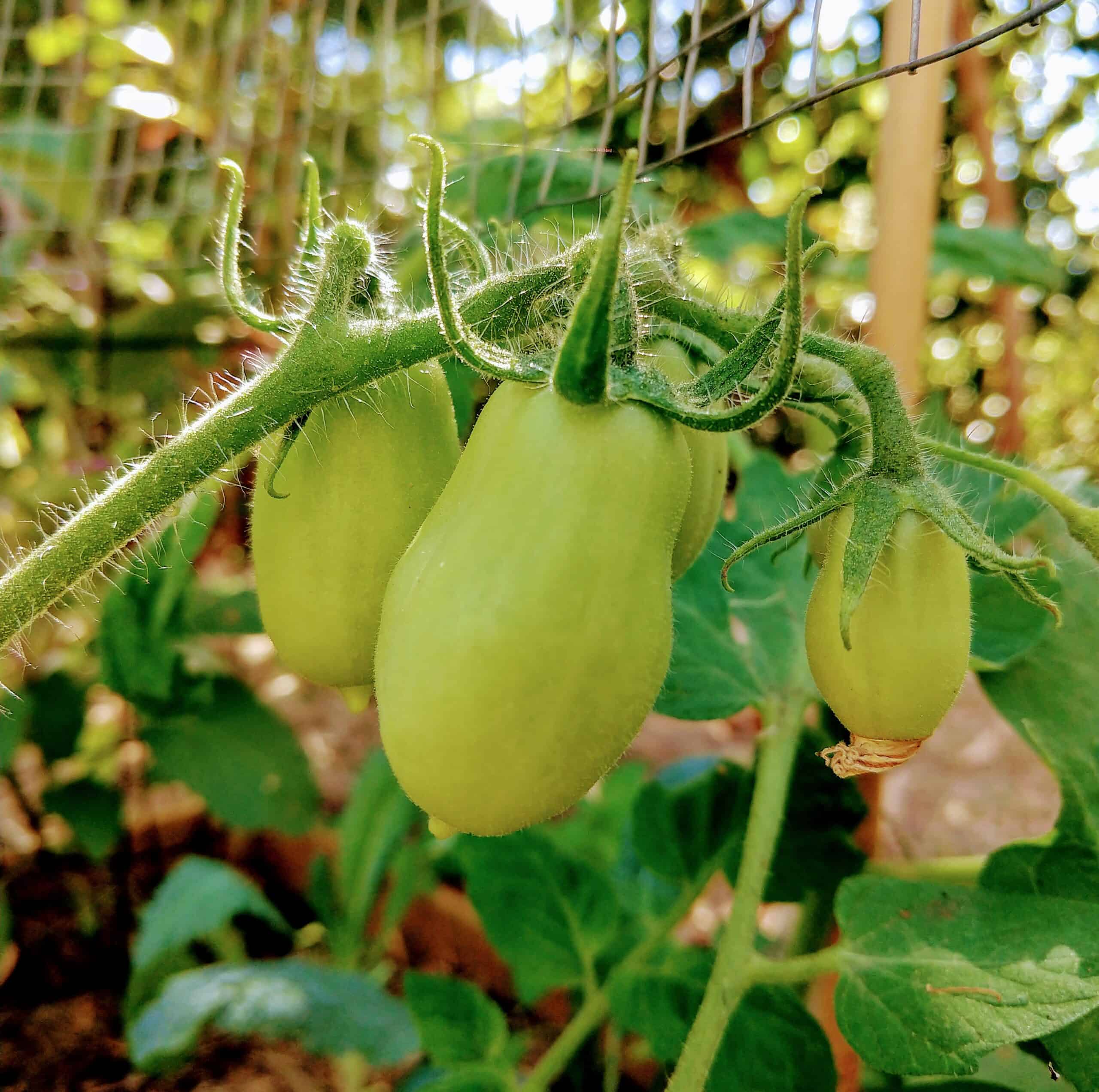
Seeds planted 5th of August along with starts.
The roma tomatoes have done particularly well, the plant is covered with fruit and pollination got better once I learned to tap the flower trusses in the early morning to release pollen. This works best when pollen is cooler.
The black Russian slicer tomatoes are looking really good in August and the plants are covered in fruit. By mid August they’re still not ripe. These tomato plants grew well in the cooler months in full sunand are showing no sign of disease.
Pineapples
We have around 10 pineapple plants grown from tops that were gifted to us. I’d estimate them to be up to a year old. The biggest one just started to flower and/or fruit, in mid August, photo at the top of the page.
Second week in August and this was a big surprise in the tropical food garden – our first pineapple is flowering and presumably fruiting. Everything I’d read on growing pineapples suggested forcing them into fruit. This one started naturally, All of our pineapple plants were grown from tops.
In the next year another plant started to flower. Maybe August is their month to start producing in our climate. The next year, 4 pineapple plants simultaneously started flowering in the first couple of weeks of August.
Sweet Potato
August in the tropical food garden, our first sweet potato flower. We’ve been eating leaves from these few plants for weeks. Treat them like spinach or any green, looks like garden critters have started eating them too., I found a green cricket of some sort munching these, he went to the chickens. RIP cricket.
Harvesting leaves for greens, planting more, partly as ground cover, mostly to eat the leaves. First flowers on the sweet potato plants – I don’t know if this signifies anything, but they’re pretty, pink and very much like the morning glory flowers to which they are closely related.
Kale
Bought semi- grown plants and seed. Both are in. Harvesting small leaves from kale for salad throughout August Also sewed seeds of two other varieties of kale.
Kale seems to enjoy the weather getting warmer in August, but grew fine right through the winter months.
Rocket
Since first sewing rocket seeds in the garden in its first year, we’ve never once been short of rocket. It just keeps coming as we harvest individual leaves, in large quantities, to add to salad. We used to buy a bulk lettuce from the store and add kale leaves and rocket leaves for flavour. Now we grow our own lettuces and it grows well in the cooler months and into August with shade. We’ve seen rocket at most times of year and it’s always germinated and grown well.
Lettuce and rocket will bolt above 25C, about now, without shade. The mizuna has started to bolt, I don’t have it shaded.
Radish
We sewed radish seed in August. I’ve never liked radish in a salad, but we just learned you can roast them, so let’s give it a go!
We have grown radish successfully right through winter in the tropics, larger daikon types are our favourite for fermenting and for their green tops.
Silver Beet
We bought silverbeet seedlings from a commercial home store and discovered that we really don’t like the taste. This muddy-tasting leaf is one we won’t bother growing again.
